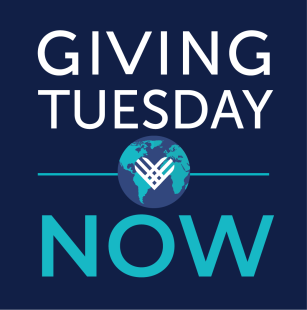 You may have heard that May 5th is #GivingTuesdayNow. It’s being billed as a day of giving and unity.
You may have heard that May 5th is #GivingTuesdayNow. It’s being billed as a day of giving and unity.
I hope that’s the case because the year-end #GivingTuesday is more about asking and sometimes even begging. Just like everything else now, we need to change the ways we do things. This needs to be a true day of giving. Don’t make it the usual money grab.
You may or may not be planning to participate. Don’t feel as if you need to, although you should be raising money now. If you’re not, you’ll be in trouble. Please don’t stop fundraising.
Many donors are being very generous right now. That may take a dip soon.
The post below spells out five reasons you should be fundraising now. The first one being – You won’t raise any money if you don’t ask.
5 Great Examples of Electronic Donation Solicitations During Covid-19
Perhaps you’ve participated in giving days in the past and they’ve been successful, or maybe they weren’t. Perhaps you’re planning to participate in one for the first time. Maybe you’re wondering if it’s best to just skip it, which doesn’t mean skipping out on fundraising altogether.
Should My Nonprofit Start a #GivingTuesdayNow Campaign on May 5?
#GivingTuesdayNow: The Pros and Cons of Participating
A successful giving campaign is about more than just raising a lot of money. You also want to build relationships and make your donors feel good about supporting your organization. This is often where it falls short.
Given the current situation, it’s vital that you concentrate on the gratitude and relationship building components. Don’t just blast a bunch of generic appeals.
I have a few suggestions to help make #GivingTuesdayNow more successful if you decide to participate in it and other alternatives if you don’t.
Address what’s happening now
Your fundraising appeals must address how the COVID-19 situation is affecting your organization and specifically detail how your donors can help the people/community you serve.
Again, don’t send vague, generic appeals. The fact that it’s #GivingTuesdayNow probably won’t mean much to your donors. They need a compelling reason to donate to your organization.
Segment your donors
Segmentation is more important than ever. If donors have given in the last month or so, don’t ask them again right now. You can ask your year-end donors, but be sure to thank them for that gift.
The Importance of Segmenting Your Donors
Also, if you’re sending an appeal to your monthly donors who haven’t given an additional gift recently, recognize them as monthly donors. They can either upgrade or give an additional gift. They get their own thank you, too.
Should You Thank Monthly Donors Who Make an Extra Gift?
Serve extra helpings of #donorlove
Your donors should be feeling the love right after they make their donation.
Make sure you have an engaging thank you landing page and thank you email for your online donors. You could even create ones especially for #GivingTuesdayNow, but don’t feel like you have to. Just make it special. Then you need to follow that with a more personalized thank you.
Give Your Donors the Best Thank You Possible
Here’s where segmentation comes into play again. Send a welcome email to new donors. Acknowledge your current donors and let them know how important their support is, especially if they’re giving additional donations.
In the past, giving days have had a transactional feel to them. That can’t happen right now. Go the extra mile and do a good job of thanking these donors – both right after they’ve made their donation and throughout the year.
Remember to stay in touch and build relationships.
Other alternatives
If you don’t want to launch a full #GivingTuesdayNow campaign (understandable), you can use it to follow up with people who haven’t donated to your emergency or spring appeal.
Maybe you’ll decide to bypass it altogether. Keep in mind other organizations will be participating. I don’t know how many, but your messages could be competing with a lot of appeals.
You have an opportunity to stand out here by keeping your fundraising campaign focused on gratitude and relationship building. You want to ramp up your donor communication so people don’t think you’re only asking them for money.
I think you’ll find your #GivingTuesdayNow campaign, or any fundraising campaign, will be more successful if you focus on making it a true day of giving, which means giving back to your donors.
Giving comes in many shapes and sizes. Give back to your community, if you can. You can also give to yourself. What you need now? Maybe it’s a Zoom gathering with friends or some solitude. Keep staying safe and be well.


 It can be tempting to jump on the latest craze and try something new. But that bright shiny object may not be the answer you’re looking for.
It can be tempting to jump on the latest craze and try something new. But that bright shiny object may not be the answer you’re looking for.


